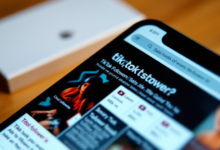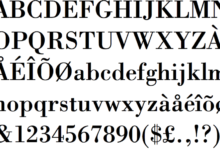Is WhatsApp chatbot integration really that hard?

The ads are working. Your call to action is hitting the mark, and new leads are landing in your WhatsApp, one after another. But there’s a catch. For every message you answer, three more pop up. You can’t get to them all instantly, and you know that with every minute of silence, a hot lead is turning ice-cold. It’s the frustrating bottleneck of a growing business.
The obvious answer seems to be a chatbot. But just the thought of it can trigger a headache. It conjures images of cryptic code, freelance developers with hefty price tags, and a project that spirals out of control. You worry that in fixing one problem, you’ll just create a dozen more. What if that whole picture is wrong?
The truth is, WhatsApp chatbot integration isn’t what it used to be. The game has changed. The real work isn’t about wrestling with programming anymore; it’s about making sharp, strategic decisions, leveraging the business sense you already have.
Forget the myths. This article gives you a straight shot of reality, showing you what it actually takes to get a smart chatbot working for you on WhatsApp. Let’s separate the facts from the fear.
Deconstructing the “difficulty”: the myths vs. the reality
To get a clear view of the road ahead, we first have to bulldoze the two biggest mental roadblocks that stop entrepreneurs cold. These are the illusions that make the project seem like a mountain when it’s really just a hill you can climb today.
The technology fear: “I’m not a developer”
The most stubborn myth is that you need to be a coder to build a chatbot. Business owners see themselves tangled in a language they don’t speak, forced to hire someone just to automate a few simple answers. A few years back, they wouldn’t have been wrong. But technology doesn’t stand still.
Today’s world runs on no-code. Modern platforms, especially those from official WhatsApp Business Solution Providers (BSPs), are built with visual interfaces. Crafting a conversation feels less like coding and more like sketching on a whiteboard. You drag, you drop, you type out your messages. No programming required.
It’s the same leap forward we saw with websites. Remember when you needed to know HTML just to build a simple page? Now, anyone can create something beautiful on Squarespace or Wix. Chatbots have had the same glow-up. Your energy goes into the what—the customer’s journey—not the technical how.
The “getting banned” fear: choosing the right gateway
This fear, on the other hand, is completely justified. We’ve all heard the horror stories: a business tries to automate WhatsApp, and suddenly their number is blocked. Losing that lifeline to your customers is a catastrophe. But it’s also entirely avoidable.
The risk comes from one place: unofficial, sketchy tools. These are the services that promise a quick and cheap connection by hijacking WhatsApp Web with a QR code or using a hacked version of the API. It’s a house of cards. They violate Meta’s terms of service, and it’s not a matter of if you’ll get banned, but when.
The only secure, sustainable path is the official WhatsApp Business Platform (often called the WhatsApp API). This is the front door. It’s the sanctioned, enterprise-grade solution built by Meta for businesses. When you use the official API through a verified partner, your risk of being shut down for automation drops to zero.
Going the official route is what makes a professional chatbot whatsapp business possible, elevating it from a clumsy auto-reply to a smart assistant that can drive sales and delight customers. It’s about building on solid ground.
Think of it this way: you wouldn’t build your physical store on land you don’t own. The official API is your deed to the property. Anything else is just squatting and waiting to get evicted. For a real business, the choice is obvious.
See also: Tech transformations making airport security seamless and safe
Your 2-step blueprint for a successful integration
With the fears out of the way, let’s talk action. You don’t need a 30-page document to get this done. A successful WhatsApp chatbot integration comes down to two smart moves that are all about strategy, not tech.
Step 1: Partnering with a BSP (your access to the official API)
First, you need to pick a Business Solution Provider (BSP). These are the companies officially approved by Meta to get you plugged into the WhatsApp Business Platform. They manage the entire technical backend so you can focus on your business. Your job is simply to choose the right one.
When you’re shopping for a BSP, look for more than just a connection. You want a partner whose platform includes an intuitive, visual chatbot builder. Their pricing should be dead simple, usually based on conversation volume. Good setup support is also non-negotiable—they should be able to walk you through the Facebook Business Manager verification. And finally, think a few steps ahead. Can their system talk to your other essential tools, like your CRM?
Step 2: Designing a smart conversation flow (strategy over code)
This is the heart of the project, and it’s where you shine. No amount of fancy tech can rescue a conversation that feels robotic or unhelpful. A great chatbot does what a great employee does: it listens, it helps, and it makes things easy for the customer.
Start small and focused. Give the bot one clear job to do. Is it meant to be your 24/7 FAQ answerer? Great. Write down the top five questions you get every single day. Is its purpose to qualify new leads? Perfect. Design a quick, two-question flow to separate the hot prospects from the window shoppers before a human ever steps in.
Whatever the goal, sketch it out. A pen and paper work just fine. Start with a warm greeting, offer a few clear options with buttons—”Track My Order,” “View Products,” “Chat with a Human”—and always, always provide an obvious escape hatch to a real person. A chatbot should be a helpful shortcut, not a frustrating maze.
So, is it hard or just different?
Let’s revisit the big question. The honest answer is that the type of difficulty has changed. The technical work of coding and servers is mostly gone, thanks to user-friendly platforms.
The real work is now strategic, and it falls to the business owner. It’s about understanding your customer, setting a clear purpose for your automation, and designing a conversation that adds real value. These are business skills, not tech skills.
So, before you look for a tool, give yourself a simple starting point. Take a pen and paper and write down the five most common questions your customers ask. That list isn’t just a list. It’s the foundation of your first successful chatbot.






